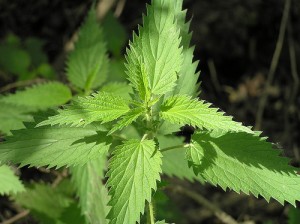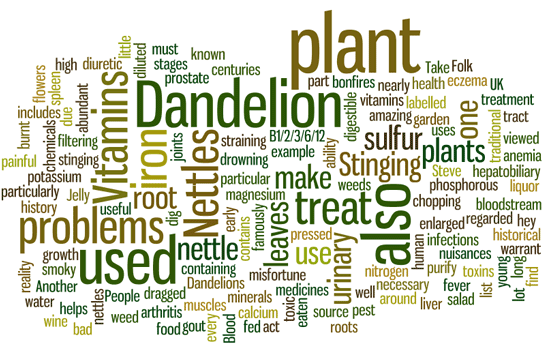Some very useful plants in the UK are regarded as weeds, or nuisances that are so bad that they warrant chopping, drowning in toxic chemicals, or dragged up by their roots and burnt on smoky garden bonfires.
 Take for example one particular plant that has had the misfortune of being labelled as a weed, the Dandelion!In reality, Dandelions have a long history of traditional use in Folk medicines, more famously for its ability to act is a diuretic; it is also used in the treatment of hepatobiliary problems. The root of the plant is used to treat liver and spleen problems.
Take for example one particular plant that has had the misfortune of being labelled as a weed, the Dandelion!In reality, Dandelions have a long history of traditional use in Folk medicines, more famously for its ability to act is a diuretic; it is also used in the treatment of hepatobiliary problems. The root of the plant is used to treat liver and spleen problems.
The root of the Dandelion helps to purify the Blood by straining and filtering toxins from the bloodstream. Its young leaves can also be eaten as part of a salad and contains Vitamins A, C and E and Vitamins B1/2/3/6/12. Dandelion flowers can also be used to make Dandelion wine and Jelly.
 Another plant that is viewed as a pest is the stinging nettle, which once you dig a little into the historical uses of this plant we find that it has been used for centuries to treat painful muscles and joints, eczema, arthritis, gout, and anemia. People use nettle to treat urinary problems during the early stages of an enlarged prostate, and for urinary tract infections, and hey fever. The list of vitamins and minerals in Stinging Nettles nearly includes every one known to be necessary for human health and growth. Vitamins A, C, D and K, calcium, potassium, phosphorous, iron and sulfur are particularly abundant in Nettles leaves. Nettles are a very high source of digestible iron. It is a must to have around. Stinging nettles also make an amazing plant food due to containing a lot of nitrogen as well as sulfur, magnesium and iron and can be pressed for their liquor which is then diluted down with water and fed to plants.
Another plant that is viewed as a pest is the stinging nettle, which once you dig a little into the historical uses of this plant we find that it has been used for centuries to treat painful muscles and joints, eczema, arthritis, gout, and anemia. People use nettle to treat urinary problems during the early stages of an enlarged prostate, and for urinary tract infections, and hey fever. The list of vitamins and minerals in Stinging Nettles nearly includes every one known to be necessary for human health and growth. Vitamins A, C, D and K, calcium, potassium, phosphorous, iron and sulfur are particularly abundant in Nettles leaves. Nettles are a very high source of digestible iron. It is a must to have around. Stinging nettles also make an amazing plant food due to containing a lot of nitrogen as well as sulfur, magnesium and iron and can be pressed for their liquor which is then diluted down with water and fed to plants.
Steve

